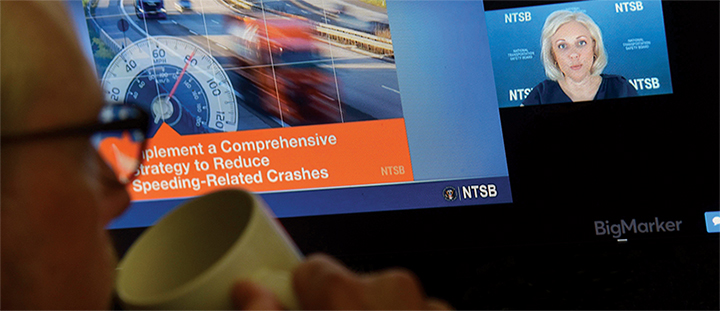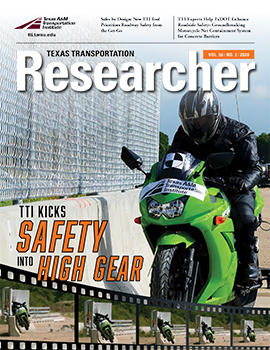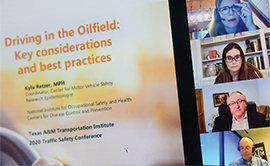The Texas A&M Transportation Institute (TTI) hosted the first-ever virtual Traffic Safety Conference June 10–12, 2020. The conference, supported by the Texas Department of Transportation (TxDOT), focused on traffic safety issues and forward-looking research aligned with TxDOT’s goal to end all traffic fatalities on Texas roadways by 2050. For more information on the zero deaths goal, read TxDOT’s media information: https://www.txdot.gov/inside-txdot/media-center/psas/end-streak.html. Even with the conference moving online, more than 550 attendees viewed and participated in sessions.

“We really appreciate everyone coming together, at least virtually, to learn about traffic safety. This is our first rodeo [online], so please pack a little patience,” urged Robert Wunderlich, director of TTI’s Center for Transportation Safety, as he opened the conference. “This is the largest group we’ve ever had for a Traffic Safety Conference.”
National Transportation Safety Board Member Jennifer Homendy stressed the issue of speeding in her keynote address on June 11. “Roadways aren’t race tracks. … Speeding was a problem before the pandemic, and it’s something that needs to be addressed. I drive I-95 every day on the way to work, when not at home during the pandemic, and everyone is speeding around me.”
Wunderlich zoomed out to a systemic view of safety in two breakout sessions on the Safe System approach. He stressed, “We should be stewards of a safer environment. We also need to integrate the needs of all users, anybody using the system. The stewards of the system have a responsibility to recognize that users make mistakes and bad decisions. … What we want to do is to reduce the opportunity for those mistakes to happen in the first place and to mitigate the consequences.”
Other sessions over the three-day conference supported the goal to reduce traffic fatalities with topics such as telemedicine technology, improved data collection and analysis methods, and tailored law enforcement training. TTI Center for Alcohol and Drug Education Studies Director Troy Walden presented on impaired-driving technology, including the Driver Alcohol Detection System for Safety. As Walden explained, “The main goal of this technology is to separate the driver from making the poor choice to drive impaired.”
Texas Transportation Commissioner Laura Ryan’s June 12 keynote address focused on meeting TxDOT’s zero deaths goal: “With all that has changed over the past few months, one thing is constant, and that’s keeping Texans safe on our roadways.” Ryan encouraged conference attendees to increase awareness about preventable traffic-related deaths on Texas roadways. She said, in closing, “I have a picture in my office of a saying, ‘One day or day one, you decide.’ I hope you will choose ‘day one.’”

Anecdotal accounts suggest the 2020 Traffic Safety Conference — now in its 11th year — was a resounding success. A strong social media campaign advertising the event ahead of time, along with conveniences like online attendance (requiring no travel or the associated expenses) and access to webinars after the fact, helped recruit nearly twice last year’s number of participants. Surveys are now out to attendees to determine their satisfaction with the conference and to identify improvements for next year.


